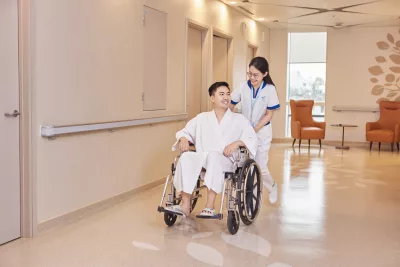What Is Spastic Cerebral Palsy? Spastic cerebral palsy is a developmental disorder caused by brain damage occurring during pregnancy or shortly after birth.
What Is Spastic Cerebral Palsy?
Spastic cerebral palsy is a developmental disorder caused by brain damage occurring during pregnancy or shortly after birth. Children with this condition often experience difficulty in movement, showing symptoms such as muscle stiffness, spasms, or rigid joints.
Spastic cerebral palsy can affect the entire body or just one half, including the upper or lower body, or one side of the body.
Causes of Spastic Cerebral Palsy
Many children are born with cerebral palsy, though in some cases, it may develop later due to other medical conditions. Spastic cerebral palsy may result from issues during pregnancy, congenital abnormalities, or complications affecting the brain.
Prenatal Brain Damage
One of the leading causes is brain damage occurring before birth. Infections during pregnancy such as cytomegalovirus, rubella, or toxoplasmosis can harm fetal brain development and disrupt the nervous system.
Perinatal Brain Damage
Oxygen deprivation during labor and delivery (birth asphyxia) can severely damage the baby’s brain. Premature babies, especially those born before 37 weeks of gestation, are also at higher risk due to the immaturity of their organs and nervous system.
Postnatal Brain Damage
After birth, brain injuries can still occur. Infections such as meningitis or encephalitis may lead to permanent damage to the central nervous system. Head trauma due to accidents or inadequate care can also contribute. Additionally, conditions like neonatal stroke may interrupt blood flow to parts of the brain, resulting in spastic cerebral palsy.
Blood-Related Issues
Rh incompatibility between mother and fetus (e.g., Rh-positive mother and Rh-negative fetus) can trigger immune responses that damage the fetus’s red blood cells and potentially its nervous system.
Congenital Malformations
In some cases, structural defects in the developing brain, either genetic or developmental, can lead to spastic cerebral palsy.
Other Contributing Factors
Other factors include neonatal infections or strokes, often associated with abnormalities in the brain’s white matter, which is crucial for signal transmission between the brain and body.
Signs and Symptoms of Spastic Cerebral Palsy in Children
Early signs may be subtle and hard to recognize. Some newborns may not cry or cry weakly, and they may show delayed physical or motor development compared to healthy peers.
Spastic cerebral palsy is classified into three main types based on symptom severity:
Spastic Diplegia (Lower Limbs Only)
This is the mildest form and presents with:
- Difficulty walking, with knees often turned inward.
- Stiffness and lack of flexibility in the lower body muscles.
Spastic Hemiplegia (One Side of the Body)
This is the second most common form:
- Paralysis on one side, either left or right.
- The affected limbs may become numb and less mobile.
Spastic Quadriplegia (All Four Limbs)
This is the most severe form:
- Paralysis of all four limbs and the trunk.
- Little to no movement and severe physical disability.
- Deformities in the limbs.
- Facial muscle involvement causing constant drooling and feeding difficulties.
Treatment for Spastic Cerebral Palsy
Each child requires a tailored treatment plan depending on symptom type and severity. The most common approach is a combination of rehabilitation therapies:
- Physical therapy
- Hydrotherapy
- Occupational therapy
- Speech-language therapy
- Training in personal and social skills
In severe cases, medication may also be prescribed. Careful health assessment is necessary before initiating any treatment to ensure safety and efficacy.
Early recognition of unusual motor signs plays a key role in diagnosis. Treating cerebral palsy requires significant time, effort, and financial resources. Choosing the right treatment path can reduce costs, prevent complications, and improve life expectancy.
Parents should be aware that complete recovery is unlikely, but developing self-care skills early can improve the child’s quality of life and independence.
Prenatal Care at Hanoi French Hospital
Hanoi French Hospital provides high-quality maternity care, supported by experienced specialists and advanced facilities. Mothers can explore their maternity programs, which include scientifically structured check-ups throughout pregnancy and postpartum. These services help ensure a safe and smooth experience for both mother and baby.
Note: This content is for reference only and does not replace medical advice. Always consult a qualified healthcare professional for diagnosis and treatment.
Treating spastic cerebral palsy is a long-term journey requiring patience and commitment. Choosing a high-quality healthcare provider plays a critical role in the speed and success of recovery. For expert consultation, please contact us for support.








